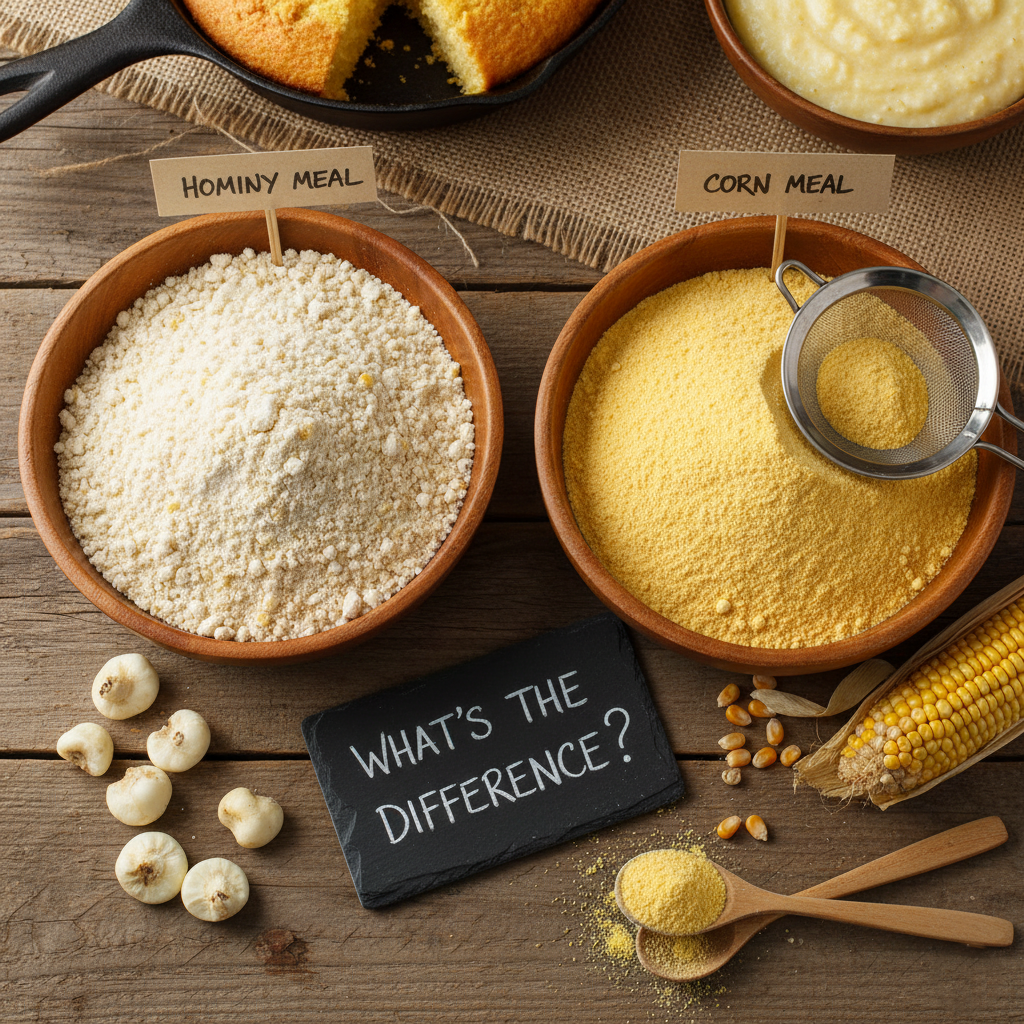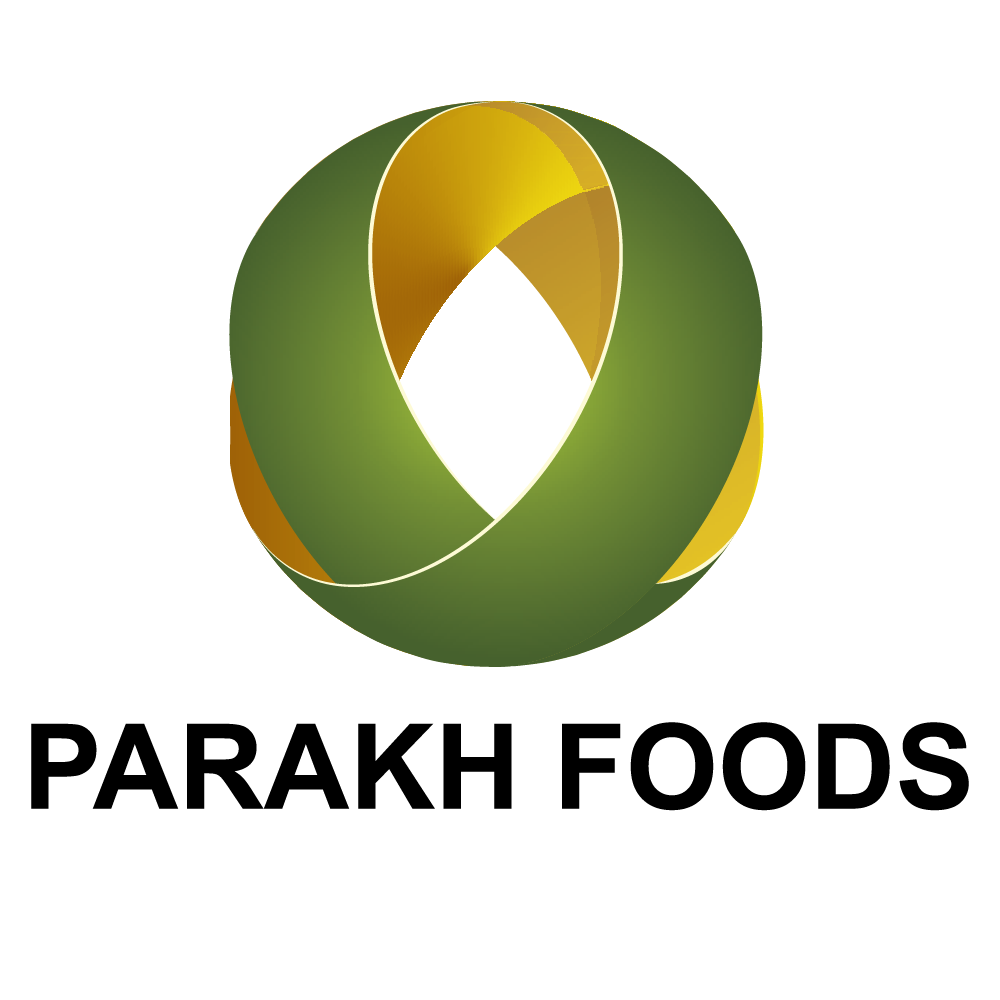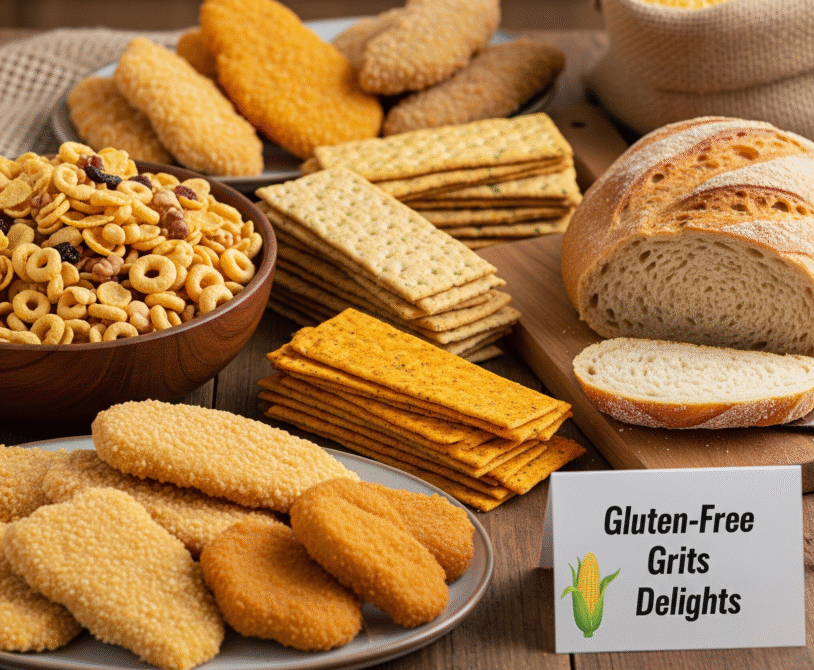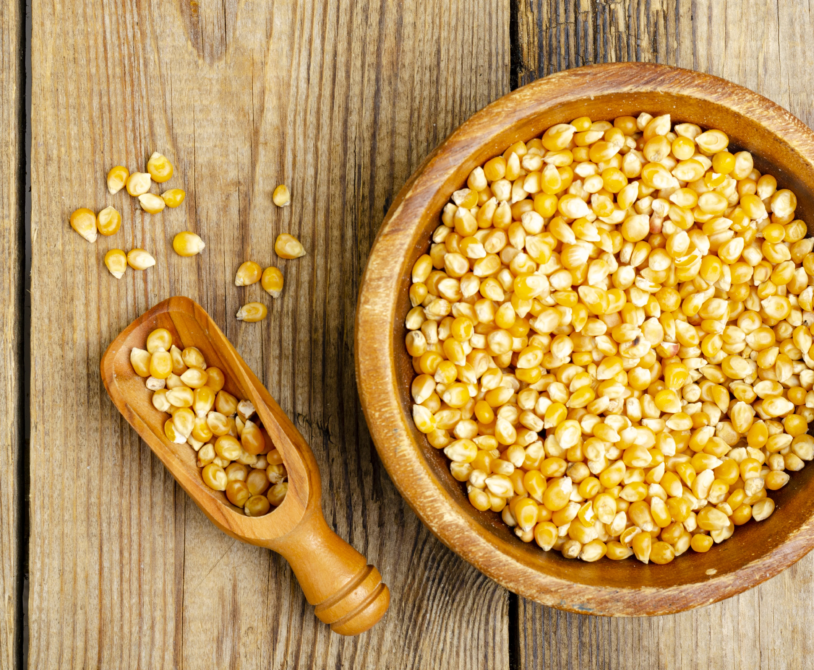
To the uninitiated, they might seem interchangeable. Both hominy meal and corn meal are golden, granular flours derived from the same plant. They form the foundation of countless beloved dishes and are staples in pantries around the world. However, for a food scientist, a chef, or a manufacturer striving for authentic flavor, the difference between them is as vast and significant as the difference between a grape and a raisin.
The two products are not simply different grinds; they are the result of a profound chemical and physical transformation that alters the corn on a fundamental level. Confusing them can lead to formulation failures and products that miss the mark on authentic taste and texture.
This definitive guide will clarify the confusion once and for all. We will explore the ancient transformative process that creates hominy, conduct a head-to-head comparison of the two meals, and provide a clear roadmap on when and why to use each in your product development.
The Defining Difference: The Magic of Nixtamalization
The single element that separates hominy meal from corn meal is an ancient and brilliant Mesoamerican process called nixtamalization.
Corn meal is straightforward. Dried corn kernels are simply ground down to a desired particle size—from coarse grits to a fine powder. The corn is mechanically processed, but not chemically altered.
Hominy meal, however, is the product of a much more complex journey. The process of nixtamalization involves:
- Cooking and Soaking: Dried, whole corn kernels are cooked and steeped in an alkaline solution, typically water mixed with food-grade lime (calcium hydroxide) or wood ash.
- Transformation: This alkaline bath works magic on the corn. It loosens the tough outer hull (the pericarp), which slips off easily. More importantly, it chemically changes the corn’s protein and carbohydrate structure.
- Rinsing and Grinding: The softened, hull-less kernels, now called hominy, are thoroughly rinsed to remove the excess alkali before being ground into hominy meal, also known as masa harina.
This ancient technique is not just for texture; it was a nutritional breakthrough.
A Comparative Analysis: Two Worlds of Flavor and Function
The nixtamalization process results in two products with vastly different profiles.
1. Flavor and Aroma
- Corn Meal: Has the sweet, distinct, and familiar flavor of fresh corn. Its aroma is mild and sweet.
- Hominy Meal: The alkaline process creates a more complex, earthy, and slightly tangy flavor profile with distinct toasted notes. Its aroma is instantly recognizable to anyone familiar with fresh corn tortillas or tamales. It is the foundational taste of authentic Mexican cuisine.
2. Nutritional Profile
- Corn Meal: A good source of carbohydrates and some minerals.
- Hominy Meal: Nixtamalization makes the corn more nutritious. The process unlocks niacin (vitamin B3), making it bioavailable and preventing the deficiency disease pellagra. It also increases the calcium content of the grain due to the absorption of the lime.
3. Dough Formation and Functionality
This is the most critical difference for a product developer.
- Corn Meal: When mixed with water, corn meal creates a batter or a crumbly, non-cohesive mixture. It does not form a workable dough on its own because the proteins and starches are not altered to bind together.
- Hominy Meal: The alkaline process changes the corn’s proteins and gelatinizes its starches in such a way that when mixed with water, it forms a cohesive, pliable dough known as masa. This dough can be shaped, pressed, and formed without falling apart. This property is absolutely essential for making products like tortillas.
Application Guide: When to Use Each
Using the right meal is non-negotiable for achieving the desired authentic outcome.
| Use Hominy Meal (Masa Harina) For: | Why it Works: |
| Corn Tortillas | Only hominy meal can form the pliable masa dough that can be pressed thin and cooked into a soft, flexible tortilla. |
| Tamales | The unique texture and flavor of the masa dough are essential for the steamed tamale. |
| Gorditas & Sopes | These thicker corn cakes rely on the shaping ability of masa dough. |
| Pozole | The hearty Mexican stew uses whole hominy kernels, which have the same signature flavor. |
| Use Corn Meal For: | Why it Works: |
| Cornbread & Muffins | Its sweet corn flavor and crumbly texture are perfect for these classic baked goods. |
| Polenta & Grits | The coarse grind and simple corn flavor are the stars of these porridge-style dishes. |
| Crispy Coatings & Breading | Its granular structure provides a superior crunch for fried and baked items. |
| Hushpuppies & Batters | It creates a light, flavorful batter that puffs up beautifully when fried. |
Conclusion: Authenticity is in the Process
While both hominy meal and corn meal begin their lives as corn, they end up as two distinctly different ingredients with unique flavors, functionalities, and culinary destinies. Hominy meal is the soul of authentic Mexican and Central American cuisine, its character forged in the ancient, transformative process of nixtamalization. Corn meal is the versatile heart of countless other global traditions, from the American South to Northern Italy.
For food manufacturers, the message is clear: understanding the profound difference between these two products is the first step toward authentic and successful product development. Choosing the right one is choosing the very identity of your final product.



